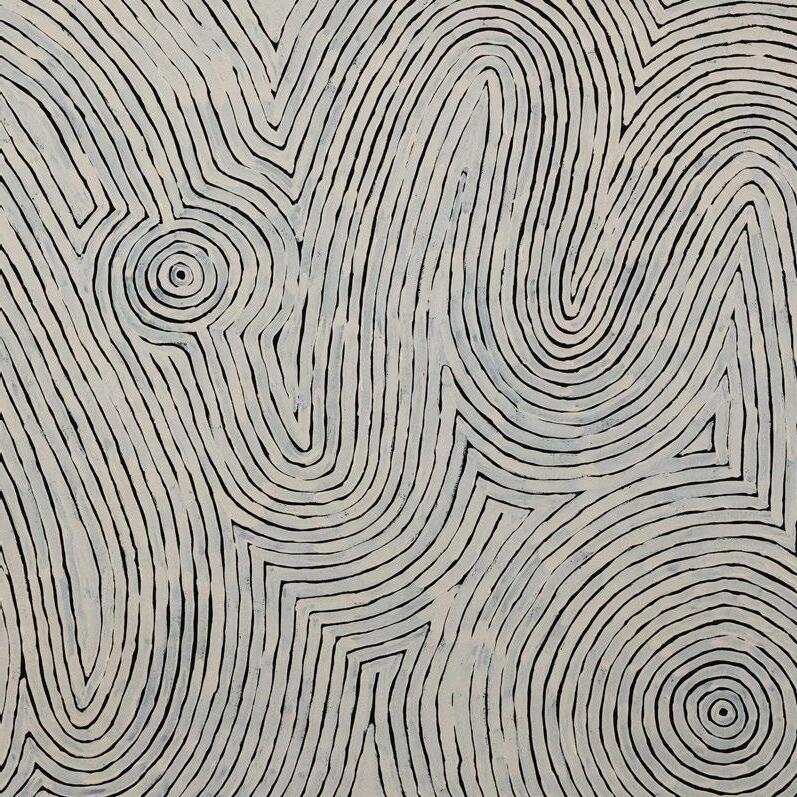
Spinifex Hill Studio acknowledges the Kariyarra people as the Traditional Owners of the land on which our studio is based, the Whadjuk Noongar people of Perth where FORM is headquartered, and Traditional Owners across Western Australia. We honour and pay respect to community Elders and to their ancestors who survived and cared for this Country.
Always Was, Always Will Be, Aboriginal Land.
Warning:
Members of Aboriginal and Torres Strait Islander communities are respectfully advised that this report contains names, artworks and images of people who have passed away.
2 Our Fellas: A Story to Be Told
Kelvin Allen
Donovan Jungala Brown
Alphonse Bullen
Derrick Butt
Layne Dhu-Dickie
Nyaparu (William) Gardiner (dec.)
Gideon Gardiner
Zenith Gardiner
Minyawe Miller
Phillip Simpson
Paul Thomas
3 Our Fellas: A Story to Be Told
FORM and the team at Spinifex Hill Studio honour and pay our deepest respects to talented artist and Elder Mr. Burton, and his family.
4 Our Fellas: A Story to Be Told
9 February - 15 April 2023
Our Fellas: A Story to Be Told is a powerful selection of paintings by the men of Spinifex Hill Studio. This exhibition has been curated to spotlight the diverse practices of our male artists, each of whom shares with us a unique story using their own contemporary language. Themes of courage, leadership, Country and Lore bring everyone together: these are our fellas.
5 Our Fellas: A Story to Be Told
Our Fellas: A Story to Be Told
Station work. Landscape. Hunting. Camp life. Sacred sites. Ancestral beings. Contemporary perspectives alongside the codified imagery of Ngurra [home Country, camp]. Deep Country where multiple Dreaming tracks intersect, and where important stories originate.
Welcome to Our Fellas: A Story to Be Told, a powerful selection of paintings by the men of Spinifex Hill Studio.
Not only does each painting have a ‘story to be told,’ but this exhibition also gives the opportunity to showcase the important collective story of a group of 12 remarkable individuals, whose diverse artistic paths happen to have converged on Spinifex Hill Studio, the only art centre dedicated to supporting the practices of Aboriginal artists in the wider Hedland area.
South and Port Hedland have always been regular gathering places for people coming in from remote communities, to attend to personal or family business, education or health. Accordingly, the Studio has always welcomed and worked with individuals from a variety of different language groups. Many of the artists—male and female—painting with the Studio are geographically remote from their ancestral lands. Physical distance, however, has never hindered the intensity and detail in the work of those whose practice focuses on their or their forebears’ Ngurra. And by highlighting for the first time the art of the male artists associated with the Studio, Our Fellas encapsulates the power and range of that cultural and artistic connection.
The exhibition draws together the work of men who represent an extraordinary diversity: of birthplace, language, lived experience, cultural references, artistic sources, and techniques. The artists belong to language groups including Mangala, Juwarling, and Warnman; Manjilyjarra, Nyangumarta, Martu Wangka; Walmajarri, Nyikana, and Banjiyma; Warlpiri and Pintupi: language groups spanning vast swathes of Country, from the coast north of Hedland, south and east inland past the Gibson Desert to the Tanami Desert, and northwards through the Great Sandy Desert to the Kimberley.
It’s hardly surprising then that the artworks showcased in Our Fellas represent correspondingly wide-ranging cultural and artistic perspectives.
The exhibition’s eldest participant, Warnman man Minyawe Miller, was born in the remote area of the Pilbara’s Karlamilyi in the 1930s. One of the last pujiman [nomadic desert dwelling] people to leave the desert, Miller’s powerful canvases reference the complex striations of the tuwa [sand hill] Country he roamed as a boy. He uses a vibrant palette to represent kuka [meat], and the hunting that would have sustained him, his sister, fellow artist Kanu (Karnu) Nancy Taylor (dec.) and their extended family during their travels.
Encryption lies at the heart of the work of another senior Manjilyjarra artist and Law man, Phillip Simpson, who paints Country around Kunawarritji. At first glimpse, Simpson’s artworks appear grounded in ochres and rusts and browns: earthy, almost sombre backdrops to labyrinthine, symmetrical networks of dots. The canvases seem to transmit a coiled energy; the dot patterns radiate arcs akin to magnetic fields. Looking closer, one discovers these patterns are picked out in a more expansive palette―of primary colours, pinks, greens, oranges and purples―yet the overall impact is still of containment and selectivity. As if embodying the restricted nature of the narratives and Country to which they allude, these works hold, and hold back, their stories.
Likewise, the artworks of Warlpiri/Pintupi man Donovan Jungala Brown are precise and almost diagrammatic, yet never explicit―in their representation of place and story. His painting Warlu & Ngupa (2021) depicts ‘water and fire dreaming. My Grandfather dreaming story. Central Western Australia.’ In this painting, Brown’s flame-coloured brush strokes conjure an intricate geometry, apparently of rectangles. And yet, after a while, other shapes emerge to offer a different perspective on the story. The same sense of purpose and confidence with colour and shape is evident in Brown’s other paintings, and in his use of flowing lines and circles. At first glance, apparently static and monochromatic. And then, the story unfolds.
6 Our Fellas: A Story to Be Told
Martu man Derrick Butt uses a different kind of visual ‘vocabulary’ in his shimmering abstracts of waterholes in his grandmother’s Country, Kulyakartu, near the Percival Lakes in the Great Sandy Desert. These are works of exquisite intensity: simultaneously aerial perspectives of land and yet also reflections night skies in their profuse yet delicate constellations of dot work, with brooding waterholes seeming to bloom out of nebulae.
Another Martu artist, Paul Thomas, has one painting in Our Fellas, and it is a meditative landscape of the towering rock face and tranquil waters of Carawine Gorge, on Nyamal Country near Marble Bar. Thomas belongs to a family of acclaimed artists: his mother, senior Martu artist Maywokka Chapman, his aunts (also senior Martu artists), and his sister Doreen Chapman regularly paint with Spinifex Hill Studio. However, as a figurative landscape artist often inspired by places outside his ancestral lands, Thomas’ practice differs from those of his female relatives.
The Kimberley inspires two of the younger artists in the exhibition: Walmajarri/ Nyikana/ Nyangumarta brothers Zenith Gardiner and Gideon Gardiner, who were born respectively in Derby and Looma. Zenith uses a figurative style to paint luminous waterfalls and lake scenery of places that are significant to him, often beneath night-skies saturated with stars and portrayals of story. While still employing a figurative approach, Gideon’s medium and technique are radically different: he likes to record experiences of Lore, hunting and initiation using a bold, graphic, comic-book aesthetic, with pen, pencil and ink on paper, rather than paint.
Both men were encouraged to make art by their father, the celebrated artist Nyaparu (William) Gardiner (1943–2018), who produced more than 350 paintings and drawings at Spinifex Hill Studio during the last four years of his life. Some of these pieces feature in Our Fellas. A Nyangumarta/ Warnman/ Manjilyjarra man who grew up in the aftermath of the famous Pilbara Aboriginal Pastoral Workers’ Strike of 1946–49, Mr Gardiner’s distinctive portraiture of his station worker contemporaries in the Pilbara and the Kimberley, and his depictions of Strike camp memories have attracted critical acclaim as well as many awards,
including a major posthumous prize at the National Aboriginal and Torres Strait Islander Art Awards in 2019. He is regarded as one of the most important artists to come out of north-western Australia during this era, and his work is in the collections of many national institutions, including the Western Australian Museum, The Art Gallery of Western Australia, and the Museum and Art Gallery of the Northern Territory.
The work of the remaining three artists in Our Fellas illustrates a versatility and spirit of experimentation characteristic of so many of the artists practising at Spinifex Hill Studio. Nyangumarta artist Kelvin Allen’s paintings are full of movement, animated by exuberant swirls and daubs of colour, and by the creatures this loose, gestural style depicts: perentie and emu. Mangala/ Juwarling/ Warnman artist Alphonse Bullen is a landscape artist who also has a striking approach to portraiture, as evidenced by his arresting renditions of fellow Studio artists Phillip Simpson and Mulyatingki Marney.
The youngest participant in the exhibition, Banjiyma man Layne Dhu-Dickie, is perhaps also one of the Studio’s best known artists and one of its most prolific storytellers. Dhu-Dickie was born in South Hedland in 2004, and began experimenting with graphic comic-style drawing when he was barely a teenager, after coming across his Dad’s Phantom and Spiderman comics. Dhu-Dickie developed his own super-hero, Captain Hedland, and created a series of comic book stories around this character. In each, Captain Hedland battles a particular social issue, like drugs and alcohol (personified by the villain Crave), lack of education (The Fisherman) and bullying (The Bush Mechanic). Dhu-Dickie’s artwork has been collected by the Art Gallery of South Australia and the Janet Holmes à Court Collection.
In presenting the artwork of the Spinifex Hill Studio men, Our Fellas is certainly sharing a proud and important story.
Mags Webster FORM, January 2023
7 Our Fellas: A Story to Be Told
Kelvin Allen
Born: 1982, Port Hedland, Western Australia
Language: Nyangumarta
Lives: Port Hedland, Western Australia
“My name’s Kelvin Allen. I was born in Port Hedland in 1982. My Mum, Nora Allen, she passed away. She was from Warralong and my father, his name is George Sailor, he come from Jigalong. I was happy in Warralong. I did schooling there and in Yandeyarra.

Years ago I came back here [Port Hedland] and I been this side a long time. I used to work in Marble Bar, cutting grasses with machines. I been around playing football, getting the footy with Karntimarta and Punmu boys. We went to Perth and we won a medal.
I been watching my family paint for years. I been watching, waiting. I was thinking about pictures a long time and now I started to put ‘em down.“
8 Our Fellas: A Story to Be Told
Artist portrait courtesy of Spinifex Hill Studio

9 Our Fellas: A Story to Be Told
Kelvin Allen Untitled, 2020 Acrylic on Canvas
91.5 x 101.5 cm
20-1012
$775


10 Our Fellas: A Story to Be Told
Kelvin Allen Untitled, 2020 Acrylic on Canvas
71 x 91.5 cm 20-1014
$538
Kelvin Allen Untitled, 2020 Acrylic on Canvas 61 x 61 cm 20-1015
$344
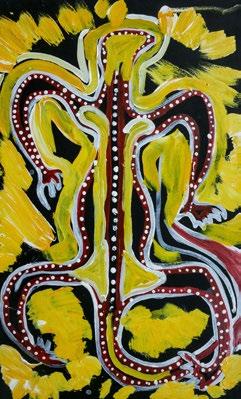

11 Our Fellas: A Story to Be Told
Kelvin Allen Untitled, 2022 Acrylic on Canvas
45.5 x 76 cm
22-171
$425
Kelvin Allen Untitled, 2022 Acrylic on Canvas
45.5 x 76 cm
22-574
$425
Donovan Jungala Brown
Born: 1974, Yuendumu, Northern Territory

Language: Walpiri/ Pintupi
Lives: Port Hedland, Western Australia
“My name is Donovan Jungala Brown. I was born in January 1974 in Yuendumu, Northern Territory. I grew up in Kintore and stayed there with my family. I have a little brother, big family from Grandfather’s side, big family tree.
I came to Port Hedland with my family. I met Maisie Ward Nungurrayi who invited me to come paintng at Spinifex with her in 2021.
I first started painting in 2016, my family are painters. My paintings are of Grandfather’s country, fire and water.“
12 Our Fellas: A Story to Be Told
Artist portrait courtesy of Spinifex Hill Studio

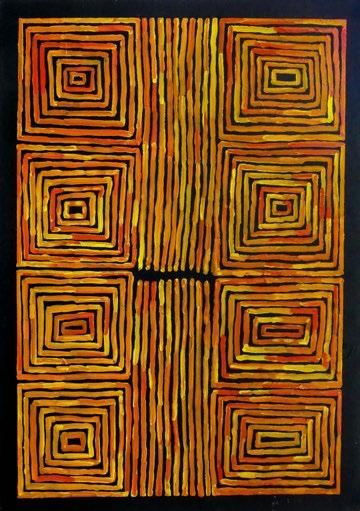
13 Our Fellas: A Story to Be Told
Donovan Jungala Brown
Untitled, 2021
Acrylic on Canvas
152 x 91.5 cm
21-1039
$1694
Donovan Jungala Brown
Warlu & Ngupa, 2021
Acrylic on Canvas
101.5 x 71 cm
21-996
$1056
Donovan Jungala Brown
Untitled, 2022
Acrylic on Canvas
61 x 91.5 cm
22-658
$919
Donovan Jungala Brown
Untitled, 2022
Acrylic on Canvas
76 x 122 cm
22-704
$1419
Donovan Jungala Brown
Untitled, 2022
Acrylic on Canvas
120 x 182 cm

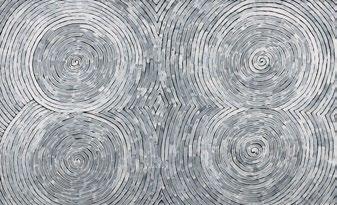

22-723
$3188
14 Our Fellas: A Story to Be Told
22-261

$938
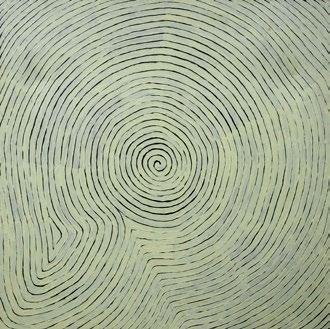
15 Our Fellas: A Story to Be Told
Donovan Jungala Brown
Untitled (White), 2022
Acrylic on Canvas
71 x 101.5 cm
22-722
$1056
Donovan Jungala Brown
Untitled, 2022
Acrylic on Canvas
76 x 76 cm
Alphonse Bullen
Born: 1975, Derby, Western Australia
Language: Mangala/ Juwarling/ Warnman
Lives: South Hedland, Western Australia
“My name is Alphonse Bullen, born in Derby. My family clan group Wulayi/Kirwirri. My language group Mangala/Juwarling and Warnman from the Great Sandy Desert. Grew up in Bidyadanga community [La Grange Mission]. Been painting since I was 10 years old.
My family come out of the bush, they were the last people come out in the 60s. I was pretty lucky to have old people like that, taught me a lot. I still think of them and thank them every day.“
Alphonse Bullen also paints with Martumili Artists.

16 Our Fellas: A Story to Be Told
Artist portrait courtesy of Spinifex Hill Studio
22-724

$225


22-725
$169
22-398
$819
17 Our Fellas: A Story to Be Told
Alphonse Bullen Phillip Simpson, 2022 Acrylic on Canvas
35.5 x 35.5 cm
Alphonse Bullen Mulyatingki Marney, 2022
Acrylic on Canvas
30.5 x 30.5 cm
Alphonse Bullen Untitled, 2022 Acrylic on Canvas
71 x 61 cm
Derrick Butt
Born: 1976, Derby, Western Australia
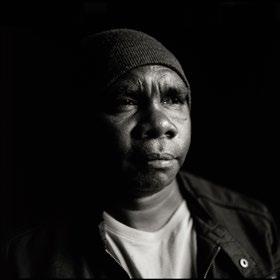
Language: Martu
Lives: Newman, Western Australia
“My name is Derrick Butt. I started working at Spinifex Hill Studio in 2018 as an artist with all my families. I am mainly painting my grandmother’s Country, Kulyakartu [Great Sandy Desert], in all the different seasons.“
24 Our Fellas: A Story to Be Told
Derrick Butt also paints with Martumili Artists.
Artist portrait courtesy of Spinifex Hill Studio
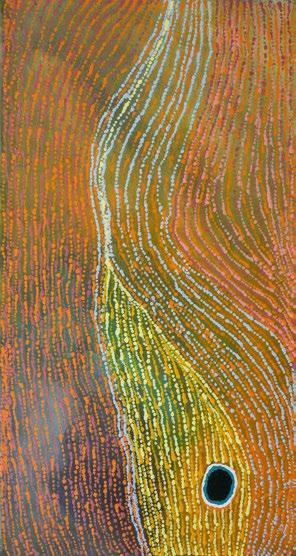
25 Our Fellas: A Story to Be Told
Derrick Butt
Waterhole, 2022
Acrylic on Canvas
40.5 x 76 cm
22-507
$869


26 Our Fellas: A Story to Be Told
Derrick Butt Waterhole, 2022 Acrylic on Canvas
30.5 x 76 cm
22-511
$631
Derrick Butt Waterhole, 2022
Acrylic on Canvas
30.5 x 40.5 cm
22-553
$331
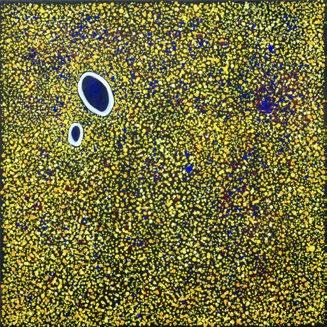

27 Our Fellas: A Story to Be Told
Derrick Butt Waterhole, 2022 Acrylic on Canvas
45.5 x 45.5 cm
22-544
$538
Derrick Butt Waterhole, 2022
Acrylic on Canvas
35.5 x 35.5 cm
22-556
$331
Layne Dhu-Dickie
Born: 2004, South Hedland, Western Australia
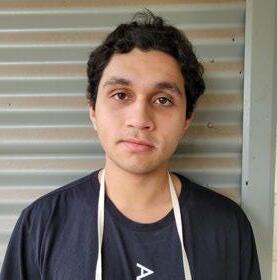
Language: Banjiyma
Lives: South Hedland, Western Australia
“My name is Layne Dhu-Dickie, I’m a comic book artist from South Hedland, Western Australia. I became interested in comic books from my dad. I used to read his Phantom comic books a lot as a kid and his Spiderman comics. I started when I was 12 years old. I’ve always loved drawing and also it’s fun trying to make a story. I’ve watched these TV shows such as Marvel and Disney Channel, so I’ve just tried to mimic their style. I think every comic book artist eventually develops their own style. I suppose there are a lot of problems [here in Port Hedland] so I thought it would be cool if I could create a superhero that could stop them. So I based it off Captain America. In the first Captain Hedland, the villain was Crave. He touched people and made them crave drugs and alcohol. I was hoping that would get a message across for all these people doing these things for them to stop.“
In 2017 Layne became the youngest artist ever to feature in the Revealed Exhibition: New and Emerging WA Aboriginal Artists, and in 2019 at the Art Gallery of South Australia’s (AGSA) Tarnanthi. His work has been collected by the Janet Holmes à Court Collection and AGSA. Layne works as a Studio Assistant at Spinifex Hill Studio.
28 Our Fellas: A Story to Be Told
Artist portrait courtesy of Spinifex Hill Studio

29 Our Fellas: A Story to Be Told
Captain Hedland Printed comic 30 x 20.5 cm $30 (includes shipping)
Layne Dhu Dickie
Nyaparu (William) Gardiner (dec.)
Born: 1943, Brockman River, Marble Bar, Western Australia
Died: 2018, Port Hedland, Western Australia
Language: Nyangumarta/ Warnman/ Manjilyjarra
Nyaparu (William) Gardiner was an award-winning artist, storyteller and language worker. For several years he recorded and wrote Nyangumarta language and stories. Mr Gardiner painted about his childhood in the 1940s before the Pilbara Aboriginal strike of 1946, and his work on pastoral stations throughout the Pilbara and the Kimberley. For the last few years of his life, Mr Gardiner lived in Port Hedland, his childhood home.
Mr Gardiner’s awards include Best Work on Paper, 36th Telstra Aboriginal and Torres Strait Islander Art Award 2019; Best Portrait Award, Cossack Art Awards 2018; Best Work in a Medium Other Than Painting, Hedland Art Awards 2017; Best Painting by a Pilbara Indigenous Artist, Cossack Art Award 2017; Highly Commended, Hadley Art Prize 2017; Most Outstanding Work, Hedland Art Awards 2016; Best Indigenous Artwork, Hedland Art Awards 2015. He was a featured artist at Tarnanthi 2019. His work is in the collections of the Western Australian Museum, The Art Gallery of Western Australia, Curtin University, Flinders University, the Museum and Art Gallery of the Northern Territory, and the Art Gallery of South Australia.

30 Our Fellas: A Story to Be Told
Artist portrait courtesy of Spinifex Hill Studio
Nyaparu (William) Gardiner (dec.)
Untitled, 2018
Acrylic on Canvas
61 x 101.5 cm

18-480
$3188
31 Our Fellas: A Story to Be Told
17-1255


$1263
17-1329
$1263
17-830
$1263

32 Our Fellas: A Story to Be Told
Nyaparu (William) Gardiner (dec.)
Strelley Side, 2017 Acrylic on Canvas
61 x 35.5 cm
Nyaparu (William) Gardiner (dec.)
Untitled, 2017 Acrylic on Linen
61 x 35.5 cm
Nyaparu (William) Gardiner (dec.)
One of our Mob, 2017 Acrylic on Linen
61 x 35.5 cm
Nyaparu (William) Gardiner (dec.)
Untitled, 2018
Acrylic on Canvas
61 x 35.5 cm
18-490
$1263
Nyaparu (William) Gardiner (dec.)
An Ordinary Bloke, 2018
71 x 71 cm


18-226
$2731
33 Our Fellas: A Story to Be Told
Acrylic on Linen
Gideon Gardiner
Born: 1993, Looma, Western Australia
Language: Walmajarri/ Nyikana/ Nyangumarta
Lives: South Hedland, Western Australia
“I come from Looma and my dad was called Nyaparu Billy Gardiner and my mum is Katie (Nalgood) and my brother is Zenith (Gardiner) and my sister is Crystal and Sheila and my other brother is Jason and my other brother is Lenny. I came to Spinifex Hill Studio, I was watching dad doing his painting of his life and that inspired me for my stories and my life for I’m still going on a journey through life but I like to draw all my memories on the paper and my experience of hunting and lore and initiation and stuff like that. Out in the Kimberley.“

34 Our Fellas: A Story to Be Told
Artist portrait courtesy of Spinifex Hill Studio
$256

19-1189
$156

35 Our Fellas: A Story to Be Told
Gideon Gardiner Untitled, 2019
Pen/Pencil drawing 42 x 59 cm
19-1021
Gideon Gardiner Untitled, 2019
Pen/Pencil drawing 38.5 x 56 cm
Gideon Gardiner
Untitled, 2020
Pen/Pencil drawing 30 x 42 cm
20-101
$113
Gideon Gardiner
Tribal Conflict, 2020

Pencil and Ink on Paper 35 x 23 cm
20-524
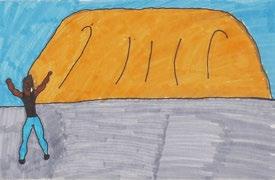
$69
Gideon Gardiner
Untitled, 2020

Pen/Pencil drawing 30 x 42 cm
20-99
$113
36 Our Fellas: A Story to Be Told
Gideon Gardiner Tribal Conflict, 2021 Ink on Paper 30 x 42 cm 21-364
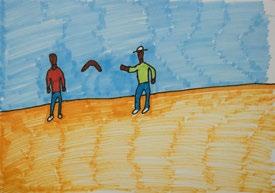
$113
Gideon Gardiner Spiritual Warfare, 2021 Ink on Paper 30 x 42 cm 21-365
$113

37 Our Fellas: A Story to Be Told
Zenith Gardiner
Born: 1983, Derby, Western Australia
Language: Walmajarri/ Nyangumarta
Lives: South Hedland, Western Australia
“My name is Zenith Gardiner. I was born in Derby, Western Australia. I’m an Indigenous man from a small community called Looma which is situated 120 kilometres south east of Derby. I have been fascinated by art since I was a boy, and art was my favourite subject at school. I think art is in my blood. My father, William Nyaparu Gardiner, [was] also a painter. My style of painting is landscapes of the outback and of certain places that are significant to me. They are places in Western Australia. My language group is Walmajarri from my mother’s side and Nyangumarta from my father’s side. My father’s clan group is Kiriwirri.“

38 Our Fellas: A Story to Be Told
Artist portrait courtesy of Spinifex Hill Studio

39 Our Fellas: A Story to Be Told
Zenith Gardiner
Creating the Milky Way, 2022
Acrylic on Canvas
101.5 x 101.5 cm
22-313
$2444

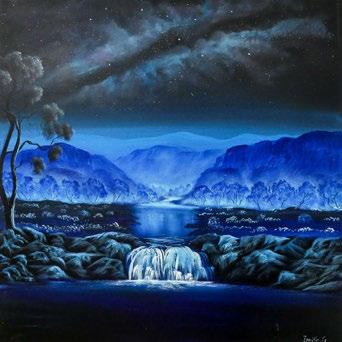
40 Our Fellas: A Story to Be Told
Zenith Gardiner Untitled, 2022 Acrylic on Canvas
91.5 x 61 cm
22-317
$1338
Zenith Gardiner Untitled, 2022 Acrylic on Canvas
76 x 76 cm
22-324
$1375

41 Our Fellas: A Story to Be Told
Zenith Gardiner Untitled, 2022 Acrylic on Canvas
91.5 x 91.5 cm
22-378
$2275
Minyawe Miller
Born: 1933, Yilyara near Punmu, Western Australia Language: Warnman
Lives: South Hedland, Western Australia
Minyawe grew up in the Kulyakartu and Karlamilyi (Rudall River) regions with his sister Kanu (Karnu) Nancy Taylor (dec.) and their extended family. As a young man, he walked long distances carrying only his tajitaji [smouldering stick] and his jurna [hunting stick]. Minyawe was one of the last pujiman [nomadic desert dwelling] people to leave the desert, following an extreme and prolonged drought. He walked in to Jigalong Station, where he met his wife Nyanjilpayi Nancy Chapman (who is also an artist). Minyawe worked for many years on pastoral stations, and was an excellent horse-breaker and rider.
He relocated with his family to Punmu as a foundational community member during the 1980s Return to Country movement, living there for many years before moving between Newman and Port Hedland.
Minyawe Miller also paints with Martumili Artists.

42 Our Fellas: A Story to Be Told
Artist portrait courtesy of Spinifex Hill Studio
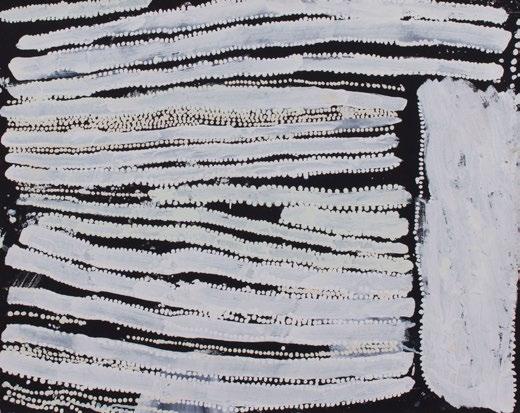
43 Our Fellas: A Story to Be Told
Minyawe Miller
Untitled, 2019
Acrylic on Canvas
61 x 71 cm
19-1119
$2775
Untitled, 2019
Acrylic on Canvas
40.5 x 51 cm
19-1011
$1450
Untitled, 2019
Acrylic on Canvas
40.5 x 51 cm
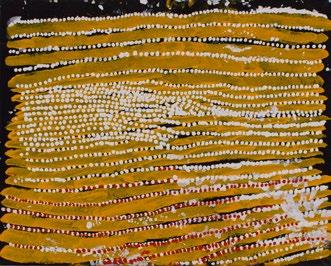
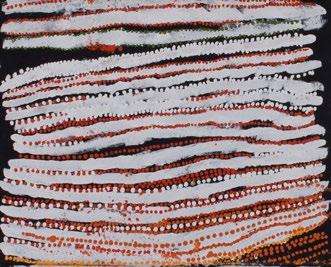
19-1236
$1450
44 Our Fellas: A Story to Be Told
Minyawe Miller
Minyawe Miller
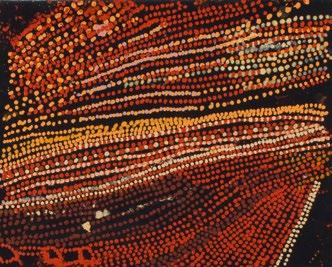
45 Our Fellas: A Story to Be Told
Minyawe Miller
Tuwa Country, 2019
Acrylic on Canvas
40.5 x 51 cm
19-792
$1450
Phillip Simpson
Born: 1968, Meekatharra, Western Australia
Language: Manjilyjarra
Lives: South Hedland/ Kunawarritji, Western Australia
“I was born in 1968, Meekatharra. Moved Jigalong with Mum, Father, two brothers and one sister, she little one. Father had two wives in the bush. Then moved to Punmu with family. In 1985 I moved from Jigalong to Punmu. Married Lorraine. We have one son, one daughter, one grandson. I have one niece and three nephews. They look after me. Today, I paint my Father’s country.“
Phillip Simpson was born in Meekatharra in 1960. As a young boy he moved to Jigalong, where he went to school, and then again relocated to Punmu Aboriginal Community during the Return to Country movement of the 1980s. There he married his nyupa (spouse) Lorraine Simpson, before they moved together to Kunawarritji Aboriginal Community in 1999, where they raised their family. Today the couple continue to move between Kunawarritji and Port Hedland.

46 Our Fellas: A Story to Be Told
Artist portrait courtesy of Spinifex Hill Studio


47 Our Fellas: A Story to Be Told
Phillip Simpson Untitled, 2021 Acrylic on Canvas
91.5 x 91.5 cm
21-327
$956
Phillip Simpson Untitled, 2021 Acrylic on Canvas
76 x 76 cm
21-146
$688
$538
$538
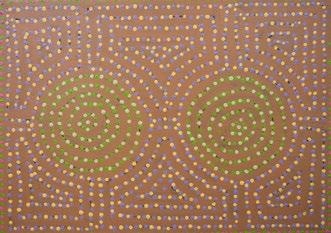

48 Our Fellas: A Story to Be Told
Phillip Simpson Untitled, 2021 Acrylic on Canvas
51 x 71 cm
21-347
Phillip Simpson Untitled, 2020 Acrylic on Canvas 51 x 71 cm
20-583
Phillip Simpson
Untitled, 2021
Acrylic on Canvas
61 x 91.5 cm
21-144
$669
Phillip Simpson
Untitled, 2021
Acrylic on Canvas
51 x 91.5 cm
21-574
$663
Phillip Simpson
Untitled, 2021
Acrylic on Canvas

51 x 101.5 cm


21-597
$613
49 Our Fellas: A Story to Be Told
Paul Thomas
Born: 1980, Port Hedland
Language: Martu Wangka
Lives: South Hedland/ Warralong Community, Western Australia
“I was born in Port Hedland. May Chapman [Martu artist who paints with Spinifex Hill Studio] is my mother. I went to Strelley school and Warralong school. I stayed at Warralong for a few years and then I went through Lore and travelled around to every community, like Jigalong, Punmu and Cotton Creek [Kunawarritji].

I came back to Warralong and started work, mustering cattle, mechanic work at Strelley, cleaning up community, fixing fence and all that. I used to work at the school for two years, teaching kids.
I do a little bit of art at Warralong. I paint different to my family, landscapes and all that, dot painting, and you know the White House [Wapa Maya, at Bloodwood Tree, South Hedland]? I used to be painting there too. I got two, three paintings in there.”
50 Our Fellas: A Story to Be Told
Artist portrait courtesy of Spinifex Hill Studio

51 Our Fellas: A Story to Be Told
Paul Thomas
Carawine Gorge, 2022
Acrylic on Canvas
45.5 x 61 cm
22_4
$406
52 Our Fellas: A Story to Be Told
FORM Building a State of Creativity and Spinifex Hill Studio
For nearly two decades, cultural organisation FORM Building a State of Creativity has worked to support the creative community of Western Australia’s remote Pilbara region. In 2008, realising there was no established support for Aboriginal artists living in the Hedland area, FORM starting providing materials, art sessions and mentoring opportunities specifically so that local artists could paint together and develop their practices. This group of artists were the foundation of the collective that now paints at Spinifex Hill Studio, one of Australia’s most dynamic art centres, and the only Aboriginal art collective in the wider Hedland area.
In 2014, with the support of Principal Partner BHP, FORM established the Studio’s permanent home in South Hedland. This is essentially FORM’s base in the Pilbara, and the Studio’s Aboriginal and nonAboriginal support and management personnel are part of the FORM team. From Monday to Friday the Studio opens to facilitate the practices of a core group of around twenty artists daily, however around a hundred artists are associated with the Studio and will paint there when in town. With a focus on acrylic painting, artists are given professional support in the preparation, creation and documentation of artwork. They are also given transport to and from the studio, lunch, and the opportunity to work with studio staff in refining their paintings for exhibitions, awards, markets and other professional opportunities.
Artists regularly participate in major national exhibitions and events, and are represented in national collections including the Janet Holmes à Court Collection, the Art Gallery of South Australia, The Art Gallery of Western Australia, Curtin University, Flinders University Art Museum, the Museum and Art Gallery of the Northern Territory, and the Western Australian Museum.
The aim has been to make the Studio a safe, holistic and dynamic environment for artists, and it has grown into an important cultural and community place for South Hedland and the wider Pilbara region. It is unique in Australia as an urban-based art centre representing Aboriginal artists from numerous cultural backgrounds and language groups; there is no dominant ‘house style,’ rather the Studio supports an eclectic range of art practices in recognition of the diversity of Indigenous experience.
Many artists have been able to build esteem and pride through their art making, gain confidence to share stories in a culturally appropriate way, travel outside their home region to attend exhibitions and art fairs, and create new income streams for themselves and their families. Most importantly, the Studio has supported the artists in articulating their culture to audiences around Australia and the world, helping build the reputation of the Pilbara as a dynamic cultural and artistic artmaking region.
53 Our Fellas: A Story to Be Told
Spinifex Hill Studio is an initiative of FORM Building a State of Creativity. The Studio is supported by its Principal Partner BHP, and by the Federal Government’s Indigenous Visual Arts Industry Support (IVAIS) program. Spinifex Hill Project Space was constructed thanks to support from BHP, Major Supporter Lotterywest, and Project Supporter the Pilbara Development Commission through the Regional Economic Development (RED) Grant Program. FORM is supported by the Department for Local Government, Sport and Cultural Industries Arts Organisation Investment program, and is assisted by the Australian Government through the Australia Council.
©2023. All rights reserved.
Copyright for photographic images is held by FORM.
Copyright for written content is held by FORM or the individual writers.
Spinifex Hill Studio
18 Hedditch Street, South Hedland WA 6722 +61 8 9172 1699
mail@spinifexhillstudio.com.au
@spinifexhillartists
www.spinifexhillstudio.com.au
FORM Building a State of Creativity
39 Gugeri Street, Claremont, WA 6010 +61 8 9385 2200
mail@form.net.au @formwa
www.form.net.au
FORM is a registered trademark owned by FORM Building a State of Creativity Inc.
Exhibition Curated and Managed By Principal Partner
Government Partners
54 Our Fellas: A Story to Be Told


































































